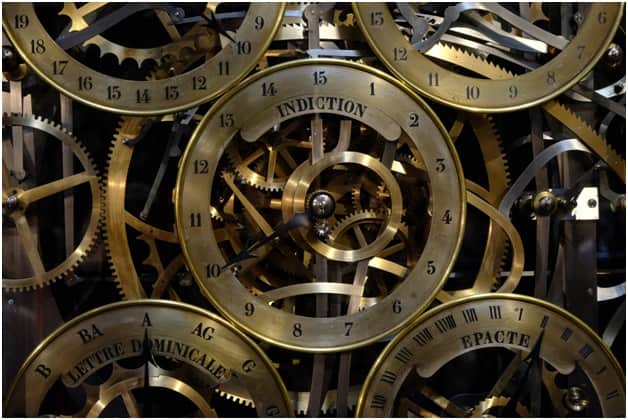
The core purpose of watches is to tell time, and some watches do only that. But due to man’s never-dying urge to have everything within reach, manufacturers have made watches that can do more than just that. These types of watches draw their appeal from the additional features they provide and improved functionality. For many men, a watch is meant to serve as a multi-tool that’s capable of providing vital information in addition to just time.
The secret lies in choosing a watch with the right set of complications, such as alarms, moon phases, calendars, tachymeters and chronographs. However, to take advantage of such features, you need to know what to look for in your watch while keeping in mind your individual needs. A watch is not just your everyday accessory or status symbol but also a practical tool.
Here are a few details to help you pick your watch with complications in mind:
Day and Date Complications
Day and date displays are the simplest and most common watch complications out there. You can see great examples of this feature in IWC big pilot watches. While the most common area to situate the date and day is in the 3 o’clock part of the watch, modern luxury watches have adapted to placing this complication anywhere on the watch.
Some will include the name of the day as is, while others will use the short form. In case a watch has a small dial, most companies use a magnifying glass on the crystal to make it easily readable. The idea is that with your watch on your wrist, you will never miss telling what day and date it is.
Chronograph Complications
While being often confused with chronometers, the closest thing to a chronograph is a stopwatch. Manufacturers first added these complications to cater for situations where watch users would need to use their watch to time stuff such as races. You can easily identify a watch as a chronograph once you notice that it has extra buttons on the side.
These watches come in various classifications, which all trickle down to the number of buttons that the watch has. The first class has only one button that controls all aspects of the chronograph, from starting, stopping and resetting it. In comparison to the other options, this watch cannot do well when recording time that will be disrupted.
The next one is the two-button chronograph, which was originally made for pilots who need complete accuracy when recording time. While the first button controls starting and stopping the chronograph, the second one resets all the counters back to zero.
The last one is the split second chronograph which is typically confused with the two-button one. It almost always has three buttons on its case and two-second hands, one over the other. The user can record two spans of time while using it. As one-second hand moves, the other one can be manipulated by the three buttons on the case.
The GMT Hand
Time zones can be a problem for most travelers as it can be tough to keep adjusting your time while you are typically used to traveling between oceans. Luckily, with a watch that contains a GMT hand, all this can change. GMT stands for Greenwich Meridian Time.
Watches that have a GMT hand as a complication have two-hour hands, one for telling time at their local time zone and another for telling time at the Greenwich Meridian. The original idea was to offer pilots a constant time when traveling between time zones. Other than having a GMT hand, some modern watches can display the time of different iconic cities on the same dial.
Power Reserve Indicators
These are typically found on watches to display whether it is finally time to rewind them. This complication is commonly found in both mechanical and automatic watches, but cannot be found on quartz watches. Instead, quartz watches have a mechanism to alert you when the battery is running low. You will typically observe it skipping a few seconds as it moves.
Can You Add Complications To Your Watch?
You will commonly find complications on high-end luxury watches. In case you bought your watch without any complications, worry not. You can add them by taking it to an experienced watchmaker.
It can be quite expensive to add complications to a watch as the watchmaker has to ensure that the timing mechanism and complications work in synchrony. Quartz watches are the easiest to add complications to as compared to other watch types. You can opt to buy a watch that comes built with all the functions that you need.
Conclusion
Complications almost turn any watch into a smart one, giving it the power to do functions that it otherwise wouldn’t. Choose your watch complications wisely to add more value to your timepiece.
